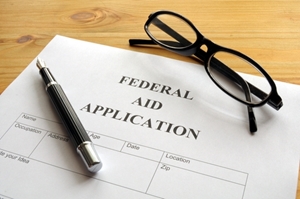
Though it may seem oxymoronic, employees can get more done when they do less. In other words, working at a breakneck pace – without taking a breather – may seem like the most efficient way of getting things accomplished. But it doesn't take long before productivity starts to decline once burnout takes hold.
The question becomes, then, not if break time should be taken, but for how long? According to a new study, the answer is best described in ratio form: 17/52.
Last year, Latvia-based social networking company Draugiem Group put together a study that aimed to discover what the perfect amount of break time was, where workers were able to get their proper amount of rest, yet not so long as to take away from getting things accomplished.
The social networking firm did this through the use of a time-tracking productivity app it developed called DeskTime, which can be downloaded to most smartphones and tablets.
After controlling for peripheral factors that might detract from the study's findings, as well as what participants actually finished in the time allotted to them, the analysis discovered that frequent break-takers turned out to be the most productive. More specifically, for every 52 minutes that they worked, 17 minutes were used for relaxing.
Workers went 'all out' when on the clock
However, there were several important caveats to this finding, researchers found. For example, in the 52 minutes that workers put their proverbial noses to the grindstone, they were 100 percent committed to the task at hand – going full-tilt, full-time, as it were. Similar to a muscle, however, there's a breaking point at which productivity can lead to diminishing returns without rest. The 17 minutes of kick-back-and-relax time served as the ideal for taking a breather.
Furthermore, the study's participants didn't work a typical eight-hour, 9-to-5 schedule. Human resources experts point out that working smarter should not be misconstrued as necessarily working longer. It's the manner in which tasks are handled that makes the difference.
Some of the most highly valued employee benefits in professional workplaces today are flexible schedules. In a recent study conducted by Finn Partners, employees ranked investing in staff, open-ended work environments and recruitment opportunities as the elements that they most wanted from their employer.
Unpredictability major workplace stressor
Enabling employees to determine when and for how long they'll work – so long as tasks get completed – is one of the ways that staff members can establish a routine, which is a key element to reducing workplace stress. A newly released poll from CareerCast asked respondents to name the workplace dynamics that had the biggest impact on their feelings of stress. Unpredictability was ranked as the biggest stressor – not knowing what was about to happen next.
Nearly two-thirds of the survey's participants described their current job as highly stressful. Of these, 1 and 4 cited unpredictability as the most influential factor on how anxious they were at any given time, followed by the tenor of the office place and deadlines.





